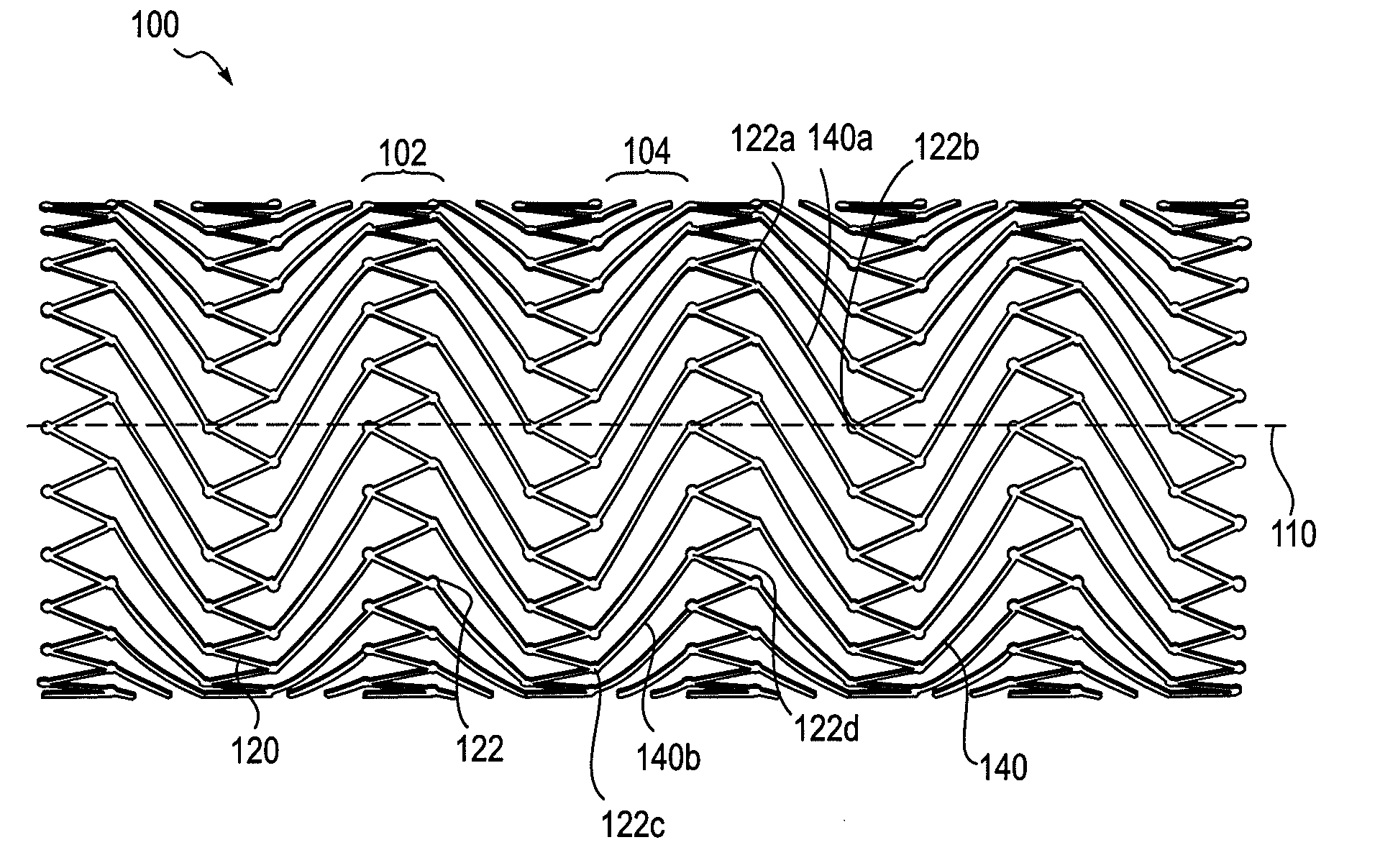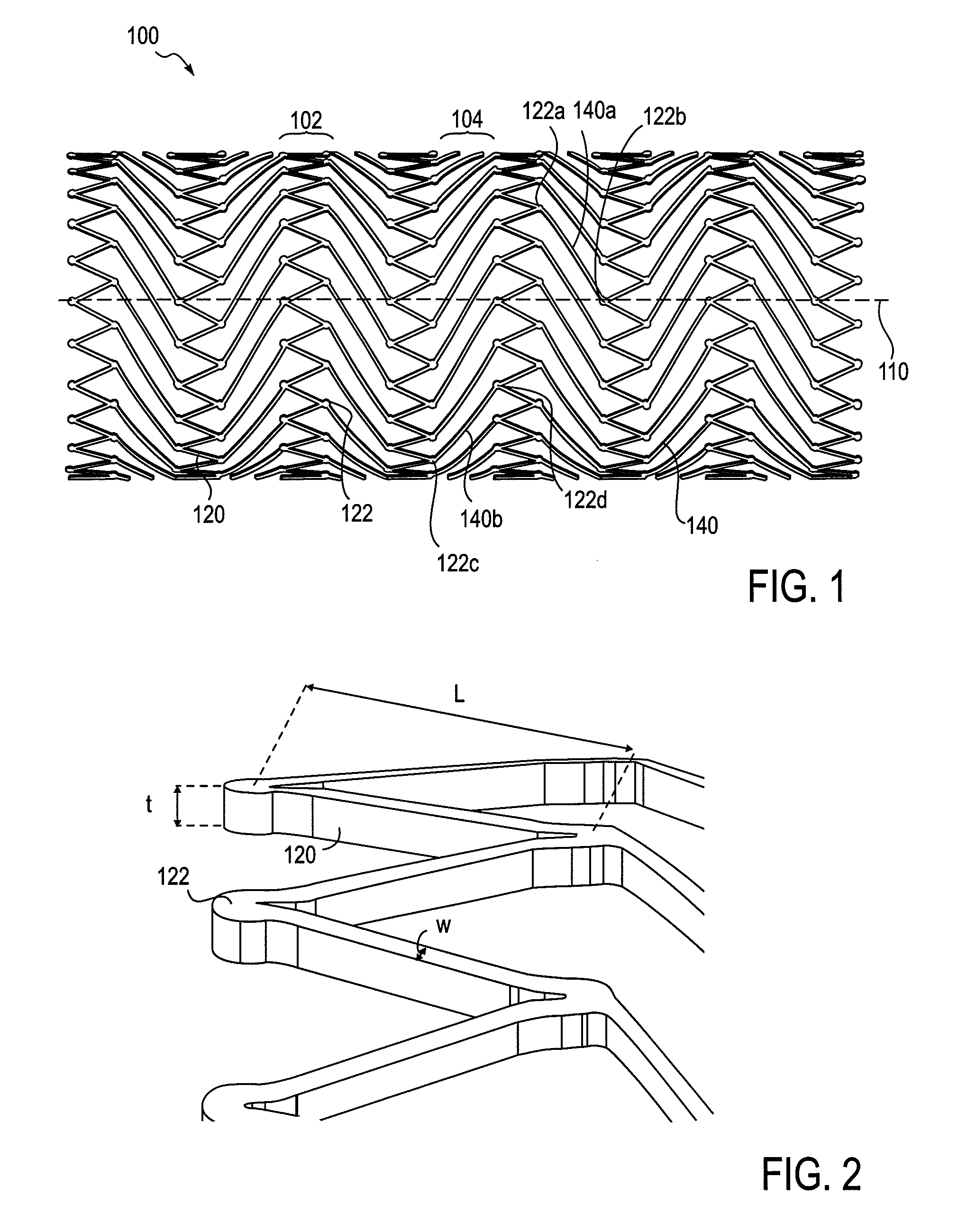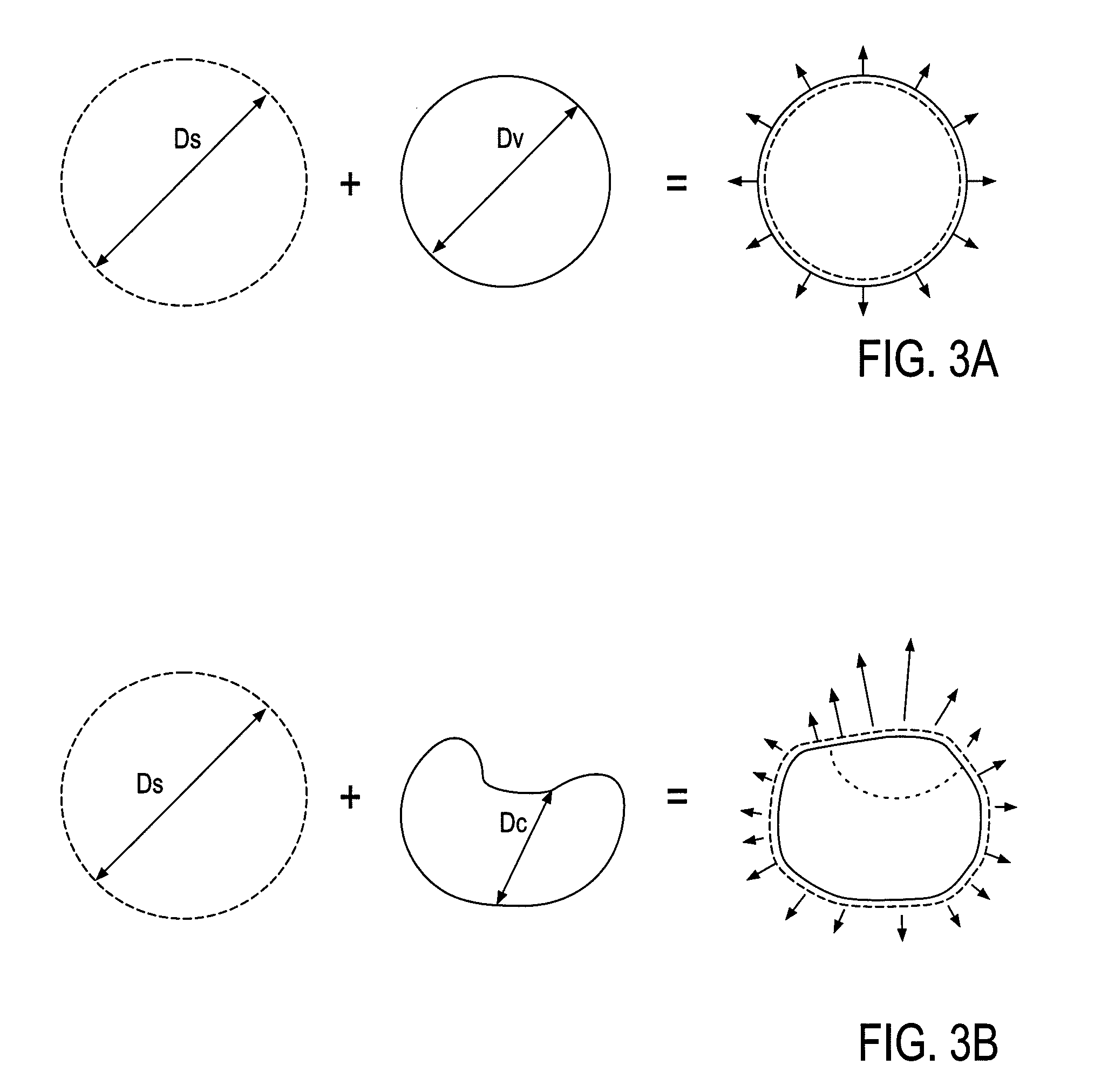Alternating circumferential bridge stent design and methods for use thereof
a technology of circumferential bridge and stent, applied in the field of stents, can solve problems such as difficult to solve with a single design
- Summary
- Abstract
- Description
- Claims
- Application Information
AI Technical Summary
Benefits of technology
Problems solved by technology
Method used
Image
Examples
examples
[0071]As an extreme example, consider holding the length l constant and varying the angle θ in a hypothetical series of different designs. In a first design, referring to FIG. 6A, as the angle θ approaches 0°, the bridging elements 140 approach an orientation parallel to the longitudinal axis of the stent. At this extreme, the bridging elements 140 have virtually no contribution to the radial strength of the stent. As the stent expands or contracts, assuming that the bridging elements 140 maintain their horizontal orientation, there is zero relative rotation between adjacent expandable ring members. Further, these horizontally oriented bridging elements inhibit bending flexibility.
[0072]In a second design, referring to FIG. 6B, as the angle θ approaches 90°, the bridging elements 601 approach a circumferential orientation. At this extreme, the bridging elements 601 have a significant contribution to the radial strength of the stent. Moreover, as the stent expands or contracts, the r...
PUM
 Login to View More
Login to View More Abstract
Description
Claims
Application Information
 Login to View More
Login to View More - R&D
- Intellectual Property
- Life Sciences
- Materials
- Tech Scout
- Unparalleled Data Quality
- Higher Quality Content
- 60% Fewer Hallucinations
Browse by: Latest US Patents, China's latest patents, Technical Efficacy Thesaurus, Application Domain, Technology Topic, Popular Technical Reports.
© 2025 PatSnap. All rights reserved.Legal|Privacy policy|Modern Slavery Act Transparency Statement|Sitemap|About US| Contact US: help@patsnap.com



